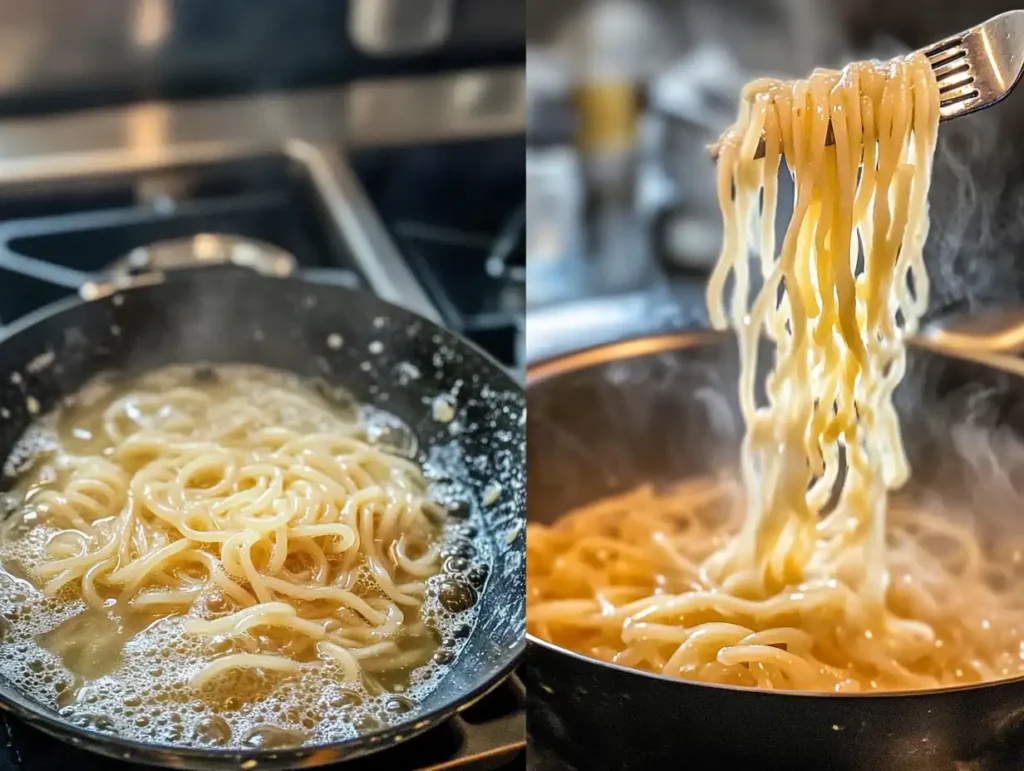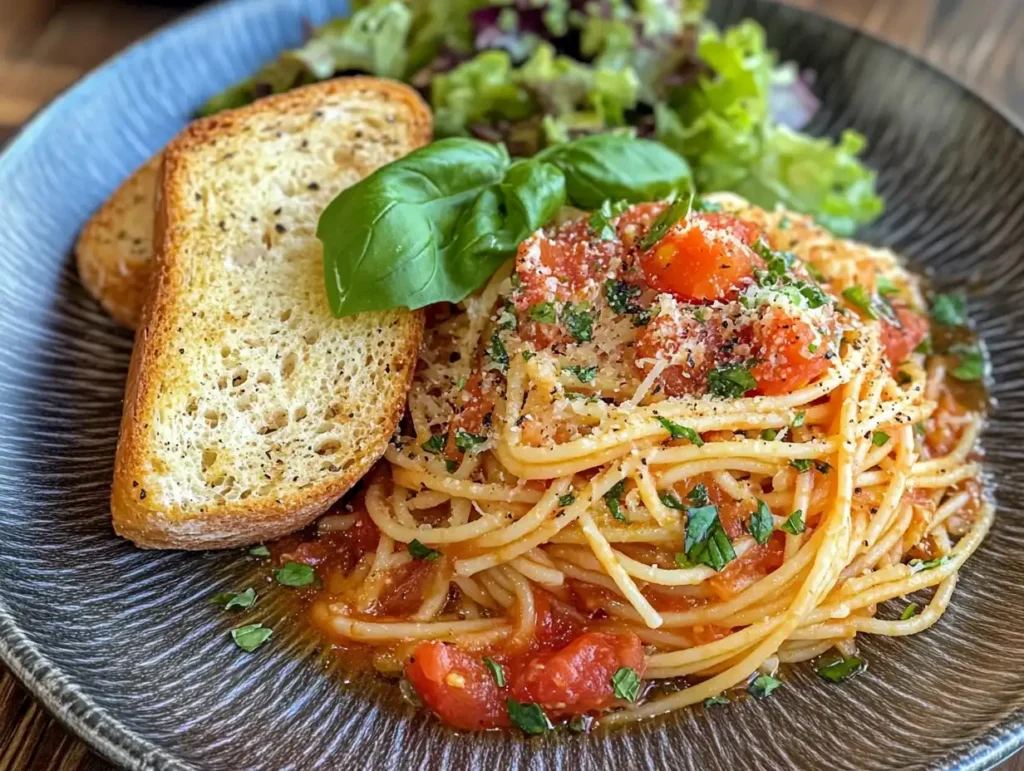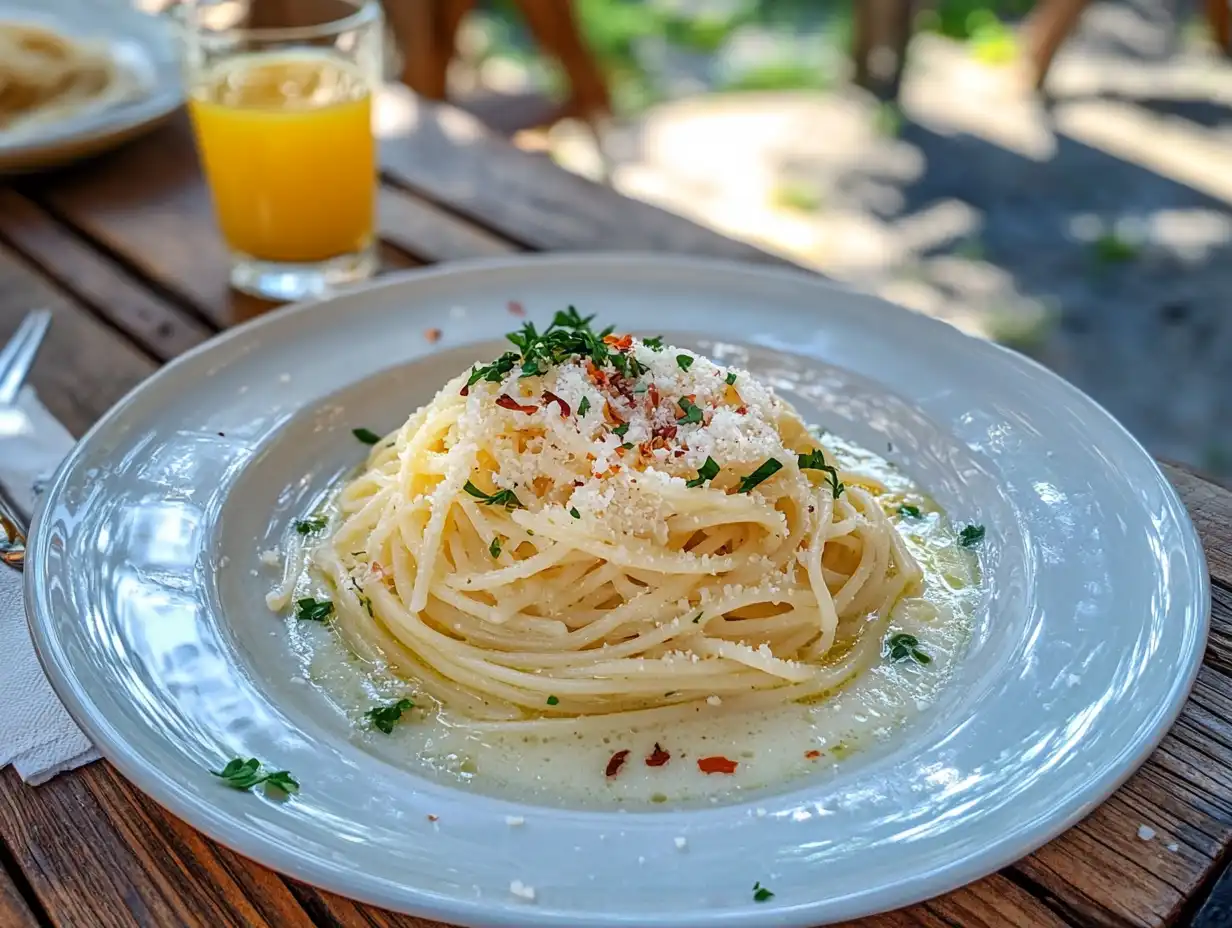Introduction
Capellini, often referred to as angel hair pasta, is one of the thinnest varieties of Italian pasta. Renowned for its delicate texture and quick cooking time, capellini can elevate simple dishes to gourmet levels. But how long should you cook capellini to achieve the perfect balance of texture and taste? Cooking time is crucial; too long, and you risk a mushy mess; too short, and it won’t reach its full potential. This guide explores everything you need to know about cooking capellini, ensuring flawless results every time.
What Is Capellini?
Capellini, also known as angel hair pasta, is a fine, thin Italian pasta variety. Its name translates to “little hairs” in Italian, highlighting its delicate, slender strands. Originating from Italy, capellini has become a staple in kitchens worldwide, prized for its versatility and quick cooking time.
Key Differences Between Capellini and Other Pasta
Unlike spaghetti or linguine, capellini’s diameter measures between 0.85 and 0.92 millimeters, making it one of the thinnest pastas available. Its fine strands allow it to cook faster and pair effortlessly with lighter sauces, such as olive oil, butter, or simple marinara, compared to thicker pasta varieties that suit hearty, robust sauces.
Importance of Cooking Time
The Texture Factor: Al Dente vs. Overcooked
Cooking capellini to perfection is an art. Achieving an “al dente” texture—a slight firmness in the center—enhances the pasta’s ability to hold sauces and creates an enjoyable eating experience. Overcooked capellini becomes soft and gummy, losing its unique character.
How Cooking Time Affects Flavor and Sauce Adherence
Pasta that is cooked correctly has a subtle elasticity that grips the sauce, ensuring every bite is flavorful. On the contrary, overcooked capellini struggles to retain sauce, often leading to a bland dish.
Standard Cooking Time for Capellini
The standard cooking time for capellini is typically between 2 to 4 minutes, depending on the brand and thickness. However, fresh capellini may cook even faster, often in just 1-2 minutes. Always check the packaging for specific instructions and adjust based on your preferences.
Variations Based on Brand and Thickness
- Commercial Dry Capellini: Usually cooks in 3-4 minutes.
- Fresh Capellini: Cooks faster, in about 1-2 minutes.
- Thicker Variants: May require an additional minute for al dente results.
How to Cook Capellini Perfectly

Step-by-Step Guide
- Boil Water: Use a large pot and boil water with a generous pinch of salt (about 1 tablespoon per 4 cups of water).
- Add Capellini: Gently drop the pasta into the boiling water and stir to prevent clumping.
- Set a Timer: Begin timing as soon as the pasta is submerged, keeping an eye on the clock for 2-4 minutes.
- Test for Doneness: Taste a strand about 30 seconds before the recommended time. If it’s slightly firm but cooked, it’s ready.
- Drain and Serve: Drain the pasta promptly and avoid rinsing unless using it for cold dishes.
Tips for Timing and Testing
- Stir occasionally during cooking to ensure even cooking and prevent sticking.
- Always taste the pasta a minute earlier than the package suggests. You can always cook it longer, but overcooking is irreversible.
Cooking Capellini for Specific Dishes
Adjustments for Cold Pasta Salads
For cold dishes, slightly undercook the capellini by 30 seconds to 1 minute, as it will continue to soften when tossed with dressing and chilled.
Adjustments for Soups
When adding capellini to soups, cook it for the minimum time recommended or add it directly to the hot broth in the final minutes of preparation.
Pairing with Sauces

Capellini pairs best with light, oil-based sauces, delicate tomato sauces, or even simple butter and herbs. Heavy, cream-based sauces can overpower its delicate nature.
Common Mistakes and How to Avoid Them
Cooking capellini may seem straightforward, but a few common mistakes can affect the outcome. Here’s how to avoid them for flawless pasta every time.
Overcooking Capellini
Because capellini cooks so quickly, even a few extra seconds in boiling water can make it mushy. Always set a timer and check the pasta early to avoid overcooking. It’s better to err on the side of undercooking since you can finish cooking it in the sauce if needed.
Undercooking Issues
While overcooking is a concern, undercooked capellini can also ruin a dish. To avoid this, taste the pasta near the end of the cooking time to ensure it has achieved the desired al dente texture.
Adding Capellini to the Sauce Too Early
If you add freshly cooked capellini to a hot sauce too soon, it can continue cooking and become overdone. Instead, time the sauce to finish alongside the pasta, or remove the pasta slightly undercooked and let it finish in the sauce.
Fresh vs. Dry Capellini
Capellini is available in both fresh and dry forms, and each type has unique cooking requirements and qualities.
Cooking Time Differences
- Fresh Capellini: Requires only 1-2 minutes in boiling water due to its delicate nature.
- Dry Capellini: Typically takes 3-4 minutes to cook.
Flavor and Texture Variations
Fresh capellini has a softer, silkier texture and a richer flavor, making it ideal for elegant dishes. Dry capellini is firmer and holds up better in soups or with heavier toppings.
Quick Cooking Tips for Busy Days
When life gets hectic, preparing a delicious meal with capellini doesn’t have to take much time. These tips will help you make the most of your cooking without sacrificing flavor or quality.
Preparing Ahead of Time
- Cook and Store: Boil capellini in salted water until slightly undercooked (al dente). Drain, toss with olive oil to prevent sticking, and store in an airtight container in the fridge for up to 2 days.
- Reheat with Ease: To serve, reheat the capellini by quickly dipping it in boiling water for 30 seconds or tossing it directly into a hot sauce on the stove.
Time-Saving Techniques
- Use Pre-Boiled Water: Save time by pre-boiling water in a kettle before transferring it to the pot. This method reduces waiting time for water to boil.
- One-Pot Cooking: Cook the capellini directly in the sauce for a seamless dish, reducing both prep time and cleanup. Add a bit of water or broth to the sauce to ensure the pasta cooks evenly.
Pairing Capellini with Quick Sauces
Capellini pairs wonderfully with sauces that require minimal preparation, such as:
- Garlic and Olive Oil: Sauté garlic in olive oil, add cooked capellini, and toss with herbs like parsley or basil.
- Pesto: Toss with store-bought or homemade pesto for a flavorful, no-cook option.
- Tomato-Basil Sauce: Use a jar of marinara sauce, heat it, and toss with freshly cooked pasta.
Best Practices for Reheating Capellini
Reheating capellini can be tricky, as it’s prone to drying out or clumping. Follow these tips:
- Moisten Before Heating: Add a tablespoon of water or broth to the pasta before microwaving or reheating on the stove. This prevents it from becoming dry.
- Use Gentle Heat: Reheat on low heat while stirring occasionally for even warming without overcooking.
- Toss with Sauce: Reheating capellini directly in a sauce ensures the strands stay moist and flavorful.
Capellini Cooking FAQs
Can You Cook Capellini in the Microwave?
While it’s possible to cook capellini in the microwave by submerging it in hot water, the texture may not be ideal. Stick to stovetop methods for the best results.
Can You Cook Capellini Without Boiling Water?
No. Boiling water is essential for evenly cooking capellini and preventing it from clumping.
How to Avoid Clumping While Cooking?
To prevent clumping, use a large pot with plenty of water, stir the pasta immediately after adding it, and continue stirring occasionally during cooking.
How to Keep Cooked Capellini Warm?
After cooking, toss capellini with a bit of olive oil and cover it to retain warmth. Place the bowl over a pot of hot water or in a low oven to keep it warm without overcooking.
Can You Freeze Cooked Capellini?
Yes, you can freeze cooked capellini. Toss it with olive oil, portion it into freezer-safe containers, and store it for up to 2 months. Thaw and reheat gently.
What Happens If You Overcook Capellini?
Overcooked capellini becomes mushy and loses its ability to hold sauce. If overcooked, try blending it into soups or casseroles where texture matters less.
How long does it take to boil capellini?
Capellini, also known as angel hair pasta, typically boils in 2 to 4 minutes. The exact time depends on the brand and whether you are using fresh or dry pasta. Always check the packaging for specific cooking instructions and test the pasta early to achieve the desired texture.
Is capellini the same as angel hair?
Yes, capellini is commonly referred to as angel hair pasta. Both terms describe the same ultra-thin pasta variety, prized for its delicate strands and quick cooking time. The names are often used interchangeably in recipes and stores.
How long to boil angel hair for al dente?
To cook angel hair pasta (or capellini) to an al dente texture, boil it for 1 to 2 minutes less than the time suggested on the package. For most brands, this means cooking for approximately 2 to 3 minutes. Taste the pasta toward the end of the cooking time to ensure a slight firmness remains in the center.
How long do you cook Barilla Capellini No. 1?
Barilla Capellini No. 1 typically requires 3 minutes to cook for an al dente texture. For a softer texture, you can extend the cooking time by an additional 30 seconds. Be sure to stir the pasta occasionally to prevent sticking and test it for doneness before draining.
Health and Nutrition Tips
Cooking capellini not only involves achieving the right texture but also considering its nutritional impact. The way you cook and serve this delicate pasta can affect its health benefits.
Portion Sizes and Calorie Considerations
A standard serving of capellini is about 2 ounces (56 grams) of dry pasta, which yields approximately 200 calories. Pairing it with light sauces, fresh vegetables, or lean proteins can keep meals balanced and nutritious. Avoid heavy cream-based sauces if you’re watching your calorie intake.
How Cooking Time Impacts the Glycemic Index
The glycemic index (GI) of pasta measures how quickly it raises blood sugar levels. Cooking capellini al dente results in a lower GI, which helps maintain stable energy levels. Overcooking increases the GI, leading to quicker spikes in blood sugar.
Related Articles to Explore
To further enhance your understanding and skills in cooking capellini, consider checking out these related resources on GreedyRecipes:
- What Is Capellini D’Angelo Pasta Called? A Comprehensive Guide: Dive into the history and variations of this delicate pasta, perfect for refining your recipe knowledge.
- Capellini Pasta: The Ultimate Guide to Cooking and Enjoying This Delicate Pasta: Get detailed instructions on preparing and pairing capellini for delicious meals.
- Marry Me Chicken Pasta: A Recipe That Wins Hearts: Explore a flavorful combination that could complement capellini beautifully.
Conclusion
Capellini is a versatile and elegant pasta choice, perfect for a variety of dishes. Cooking it to perfection involves attention to time, texture, and pairing with the right ingredients. By understanding the nuances of its preparation, you can ensure that every plate of capellini is a culinary delight. Experiment with cooking times and accompaniments to create meals that suit your taste and lifestyle. With these tips, you’ll be a capellini expert in no time.
